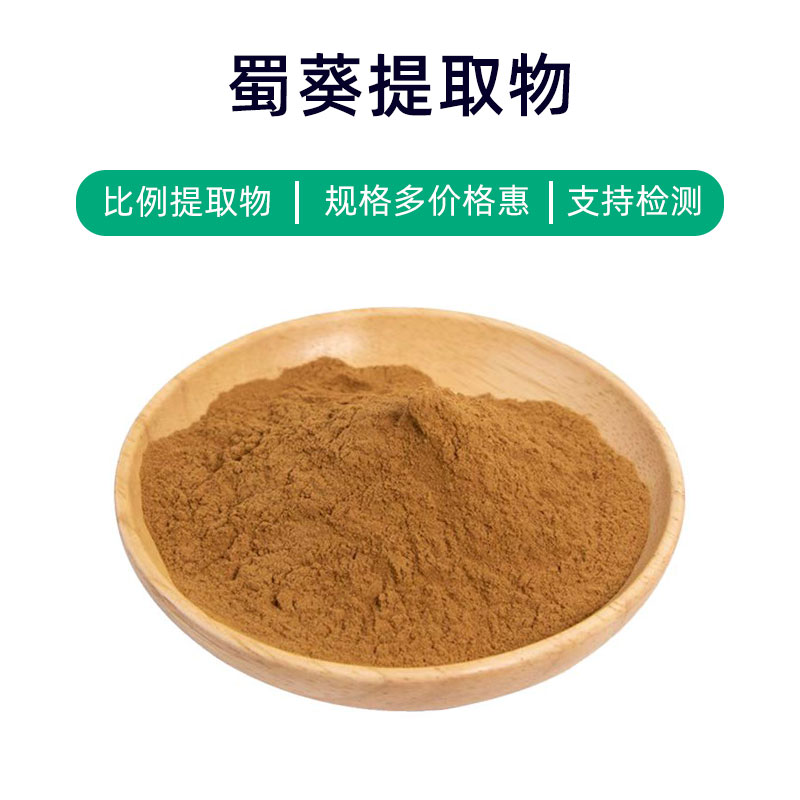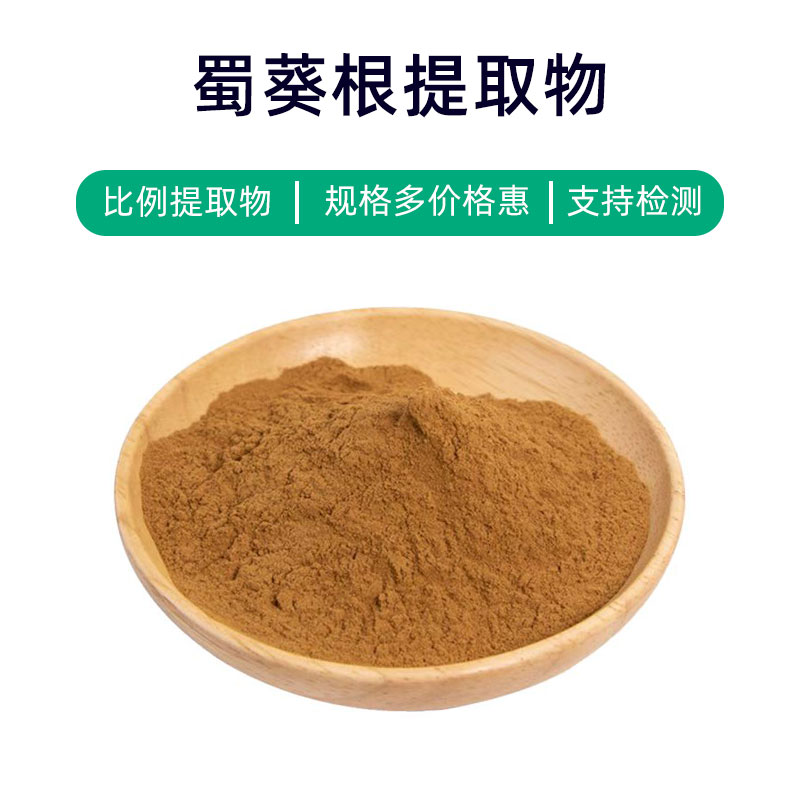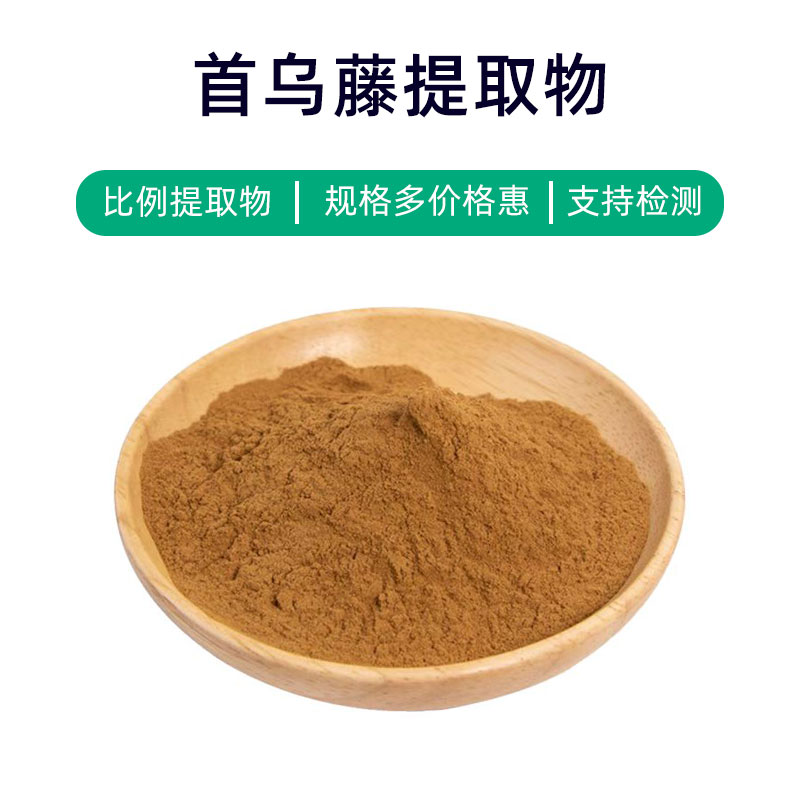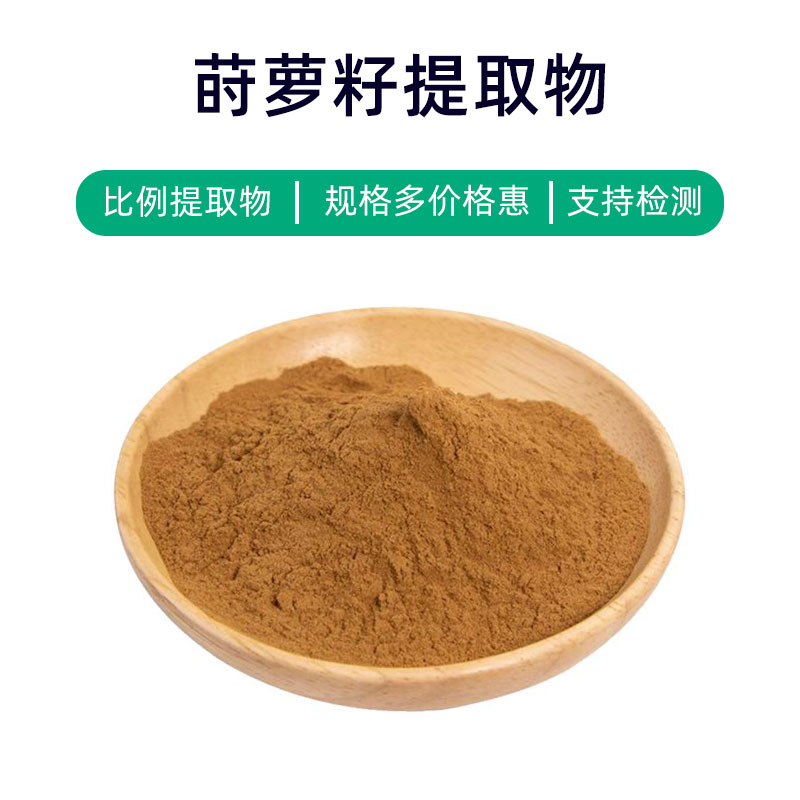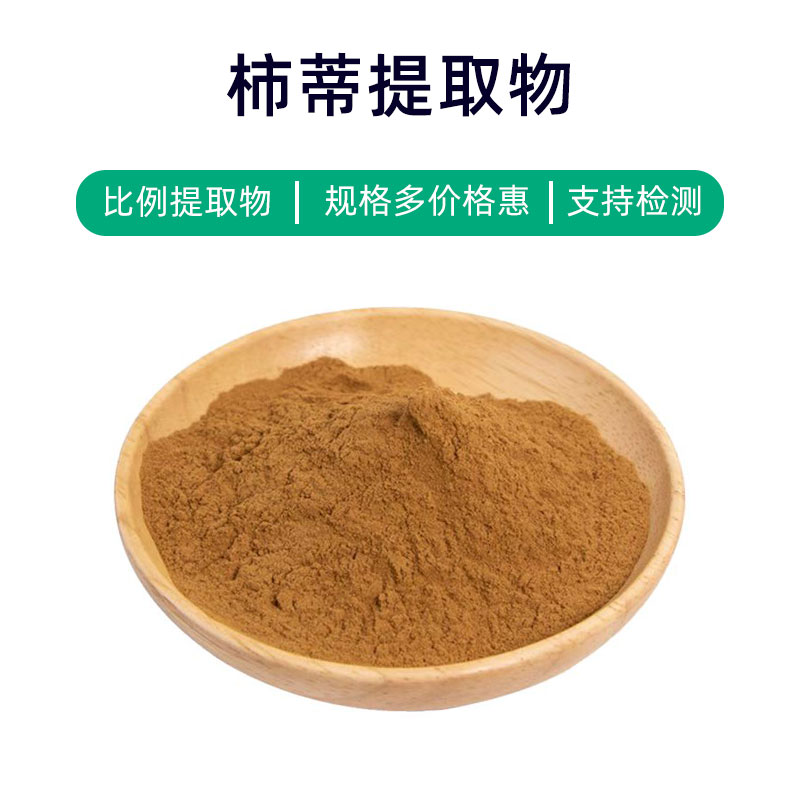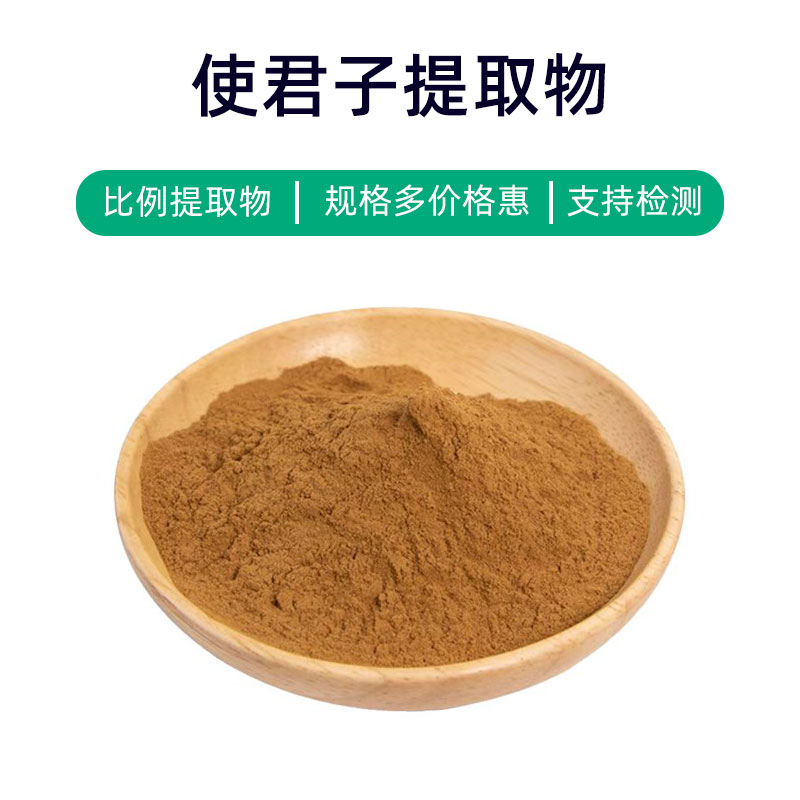Grape Seed Extract Product Introduction
Grape seed extract is a natural plant extract derived from grape seeds, primarily composed of proanthocyanidins, catechins, and various polyphenolic compounds. These components possess strong antioxidant properties, helping to eliminate free radicals from the body, protecting cells from oxidative damage, slowing down aging, and enhancing immunity. Additionally, grape seed extract has anti-inflammatory, antibacterial, and cardiovascular protective effects.
In the pharmaceutical field, grape seed extract is widely used in the preparation of dietary supplements and medications. It is commonly employed in the prevention and treatment of cardiovascular diseases, helping to lower blood pressure, regulate lipid levels, and improve microcirculation. In cosmetics, grape seed extract is frequently included in skincare and anti-aging products due to its antioxidant, anti-wrinkle, and skin-brightening benefits, aiding in the protection against environmental pollutants and UV damage. Furthermore, grape seed extract is widely used as a food additive to enhance nutritional value and preservation, such as being used as an antioxidant or preservative.
Overall, grape seed extract, as a natural plant extract, has broad application prospects and plays an important role in nutritional health across various sectors, providing robust support for health and beauty.
Grape Seed Extract Production Process
The production process for grape seed extract typically includes the following main steps:
- Raw Material Preparation: Select fresh, ripe grapes, wash and peel them, then separate the seeds as the raw material for extraction.
- Crushing and Grinding: The cleaned grape seeds are crushed and ground to increase their surface area, facilitating the subsequent extraction process. Mechanical grinding or high-speed milling methods are generally used.
- Extraction Process: Use appropriate solvents (such as ethanol or water) to soak the crushed grape seeds and extract the active components. Extracting can be done at room temperature or through heated extraction methods.
- Solvent Recovery: After extraction, the extract is concentrated, and the solvent is recovered to reduce resource waste and environmental pollution.
- Filtration and Purification: The extract is filtered to remove impurities and suspended particles, followed by suitable purification methods (like gel chromatography or gel filtration) to further refine the target components.
- Concentration and Drying: The extract is concentrated to remove moisture, resulting in a concentrated form. Then, methods like spray drying or vacuum drying are used to turn it into powdered grape seed extract.
- Packaging and Storage: Finally, the grape seed extract is packaged, typically in airtight packaging to prevent exposure to oxygen, moisture, and other external factors. The product is stored in a dry, cool environment, avoiding direct sunlight and high temperatures.
The entire production process requires strict control of operational parameters at each stage to ensure consistent product quality and effective extraction of active components. Compliance with relevant regulations and standards is also necessary to ensure product safety and legality.
Efficacy and Side Effects of Grape Seed Extract
Grape seed extract is a natural plant extract rich in bioactive compounds, and its main effects and benefits include the following:
- Antioxidant Effects: The proanthocyanidins and flavonoids in grape seed extract have powerful antioxidant properties, able to neutralize free radicals, delay cell oxidative damage, and protect cell membranes, proteins, and DNA from oxidative stress.
- Improving Cardiovascular Health: Grape seed extract can enhance the elasticity of blood vessel walls, improve blood circulation, lower lipids and cholesterol levels, and help prevent atherosclerosis and other cardiovascular issues.
- Anti-inflammatory and Anti-allergic Properties: The bioactive components in grape seed extract can inhibit the release of inflammatory factors, reduce inflammatory responses, and provide some relief for allergic reactions.
- Beauty and Health Benefits: Grape seed extract's antioxidant, anti-inflammatory, and collagen synthesis-promoting properties make it suitable for use in beauty products, helping to improve skin elasticity, reduce wrinkles, and minimize pigmentation, keeping skin healthy and youthful.
- Anti-aging: The polyphenolic compounds in grape seed extract can protect cells from oxidative damage and slow down the aging process, helping to maintain stable body functions.
- Support for Immune Function: Grape seed extract has some immune-regulating effects, enhancing the body’s immune capabilities, increasing resilience, and reducing the occurrence of infections and diseases.
Grape seed extract is generally safe when used appropriately, but some precautions should be observed:
- Moderate Use: It's advisable to use under the guidance of a physician or nutritionist, following the recommended dosage on the product label.
- Possible Side Effects: Long-term or excessive use of grape seed extract may lead to digestive discomfort, headaches, dizziness, or other undesirable symptoms.
- Drug Interactions: Grape seed extract may interact with certain medications, such as anticoagulants and antihypertensives, and it is important to be cautious about possible interactions.
Overall, grape seed extract offers various health benefits, but caution should be exercised when using it, following the guidance of healthcare professionals to ensure safe and effective use.
Applications and Dosage of Grape Seed Extract
Grape seed extract has extensive applications in the pharmaceutical, food, and cosmetic industries. Its main application scenarios and dosage are as follows:
- Pharmaceutical Field:
- Cardiovascular Health: Grape seed extract is used to prepare cardiovascular health products, such as vasodilators and antihypertensive medications, with a recommended daily dosage of 150-300 mg, usually divided into multiple doses.
- Antioxidants: As a potent antioxidant, grape seed extract can be used to prevent and treat chronic diseases like arthritis and diabetes, with common dosages of 100-300 mg per day.
- Food Industry:
- Dietary Supplements: Grape seed extract is often added to dietary supplements, such as capsules, tablets, and beverages, to enhance antioxidant capacity and improve cardiovascular health. Common doses are 100-200 mg daily.
- Functional Foods: Grape seed extract can be used to produce functional foods, such as lozenges, candies, and cookies, aimed at nourishing the body and boosting immunity.
- Cosmetics Industry:
- Skincare Products: Rich in polyphenolic compounds, grape seed extract has antioxidant, anti-inflammatory, and anti-aging benefits, and is frequently added to skincare products such as creams, serums, and masks to keep skin youthful, firm, and smooth. It's usually recommended for daily use 1-2 times, applying an appropriate amount to cleansed skin.
- Hair Care Products: Grape seed extract is also used in hair care products like shampoos and conditioners, helping to protect hair from UV rays and environmental harm, typically suggesting sufficient application to wet hair followed by massage and rinsing.
Overall, grape seed extract has a broad range of applications across pharmaceuticals, food, and cosmetics, with dosages should be based on specific product instructions or healthcare provider recommendations.
Grape Seed Source Plant Introduction, Distribution, and Growing Environment
Grape seed extract is derived from the seeds of grapes (scientific name: Vitis vinifera). Below is a detailed introduction to the grape plant’s origin, distribution, and growing environment.
- Source Plant Introduction:
Grapes are the fruit of the grapevine plant, belonging to the Vitaceae family and Vitis genus, and are a deciduous vine plant. Grapevines typically feature long tendrils, lobed leaves, and small, dense flowers, with mature fruits that can be round or oval in shape, available in red, purple, green, and other varieties. - Distribution:
Grapes are native to Europe but are now widely cultivated worldwide, including in regions of Europe, Asia, Africa, North America, and South America. Major cultivating countries include France, Italy, the United States, China, Spain, and Argentina. - Growing Environment:
- Climate: Grapes thrive in warm, humid climates with a high requirement for sunlight. Generally, they adapt well to warm summers and cold winters.
- Soil: Grapes prefer loose, fertile, and well-drained soils with a relatively flexible pH requirement, typically optimal between 6.0-7.5.
- Altitude: Grapes can grow in low to mid-altitude regions, typically ranging from 200 to 1500 meters, with varying degrees of adaptability to altitude across different varieties.
Grapevines are highly adaptable crops well-suited for warm, humid climates, with relatively flexible soil and altitude requirements. Due to their widespread distribution and adaptability, grapes hold significant economic and social value globally.
Processing and Storage of Grape Seed Extract
The processing of grape seed extract typically involves the following steps: First, harvesting and sorting the grape seeds, then grinding or crushing the seeds, followed by extracting the target components via solvent extraction or supercritical fluid extraction methods, and finally, filtering, concentrating, and drying to obtain the extract. For storage, grape seed extract should be kept in a cool, dry, well-ventilated area, avoiding direct sunlight and high temperatures, while preventing moisture and mold contamination to maintain its stability and quality.
Monica Sun is a seasoned expert in the plant extraction industry with over a decade of experience in research and production. She specializes in the extraction and purification of plant active ingredients, focusing on driving innovation in natural product applications. Monica has participated in the development of multiple functional plant extracts, delivering high-value natural raw material solutions for the health food, pharmaceutical, and dietary supplement sectors.









